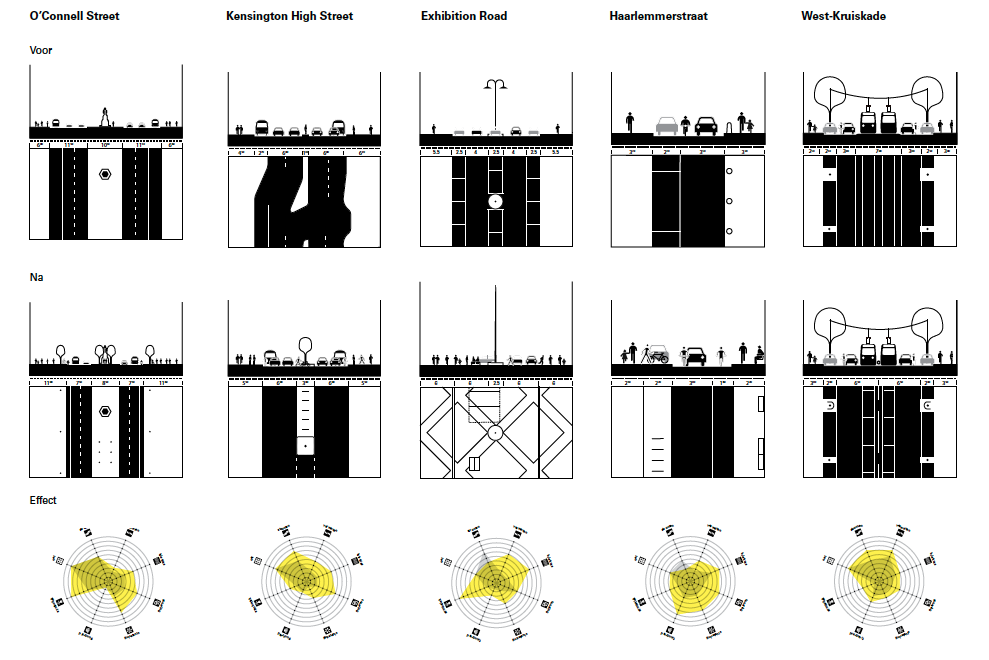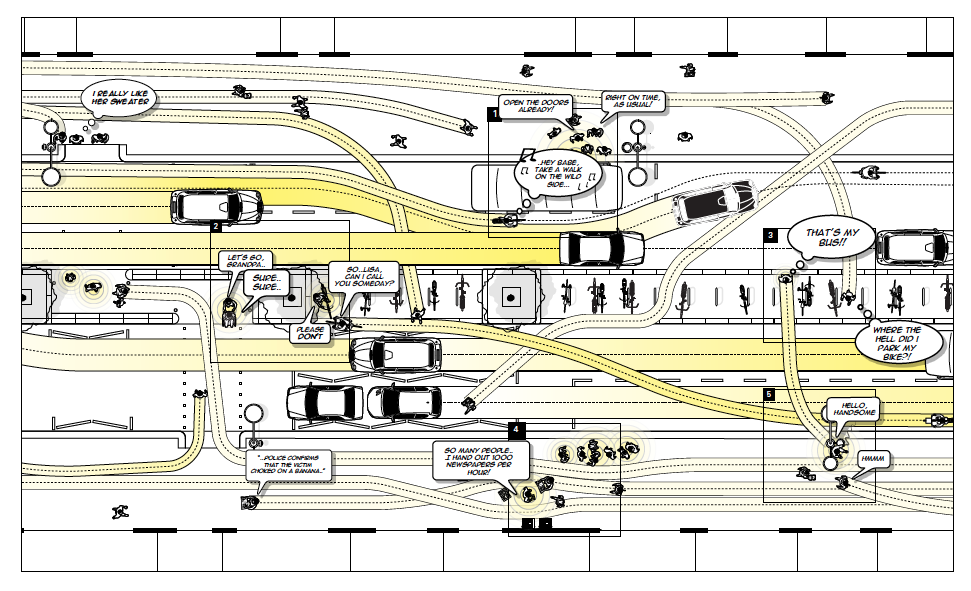City and Auto / Functional Ambience
Bauwelt 24:2014 Stadt und Auto – this June 27, 2014 issue of the German weekly Bauwelt has good articles about cars in cities. Even if you’re German-language-challenged, it’s worth a look for the photos and illustrations of a variety of approaches to harmonizing the tangle of cars, buses, pedestrians, and bicyclists in urban centers.
The link above will only take you part way through this issue. Among the articles in the hardcopy magazine that are not online is one called Der Strassencocktail, about a Dutch research project called Functional Ambience (the image above is from the Functional Ambience website). 10 recently redesigned urban streets were selected as examples of best practice for creating a good city street. They’re examined, categorized, and compared by the team of researchers from Hogeschool Rotterdam, Goudappel Coffeng, Planning Department City of Rotterdam. You can read about it in English here. See a report (in Dutch) on their findings in this 26-p PDF booklet and another article, also in Dutch but with the images nicely laid out, here. It looks like a book is in the works.
Below are a examples from the PDF booklet. Part of their analysis is brought together in what they call a ‘Spidergraph’
This graph is used to analyze the current condition of streets , to determine the ambitions of future street redesigns and to serve as a discussion tool for professionals.
The top image (below) is part of the comparison of the ten streets, before and after redesign. The flow diagram is of Kensington High Street in London. I like their positive approach as illustrated in the quote after the images (from the English description) and in this one, cited as inspiration:
‘If you plan for cars and traffic, you get cars and traffic. If you plan for people and places, you get people and places.’
William H. Whyte (1980)
“All of the analyzed city streets owe their specific quality to an approach that actually embraces ‘decent behavior’ of people in traffic. Rather than discouraging undesirable behavior by physical interventions (a common approach to traffic design), the exemplary cases show that streets must create conditions that encourage and stimulate specific behavior.”



